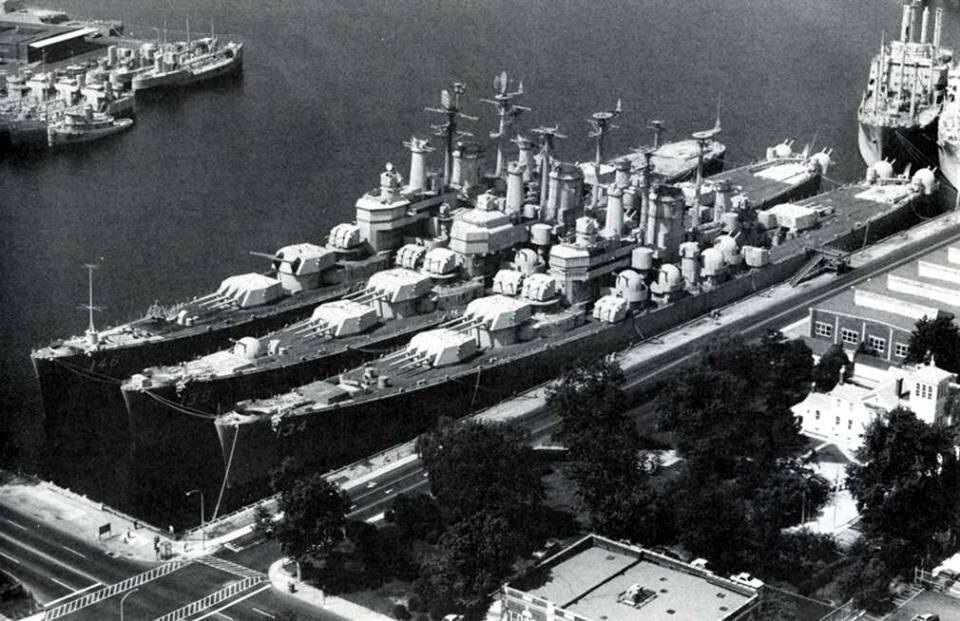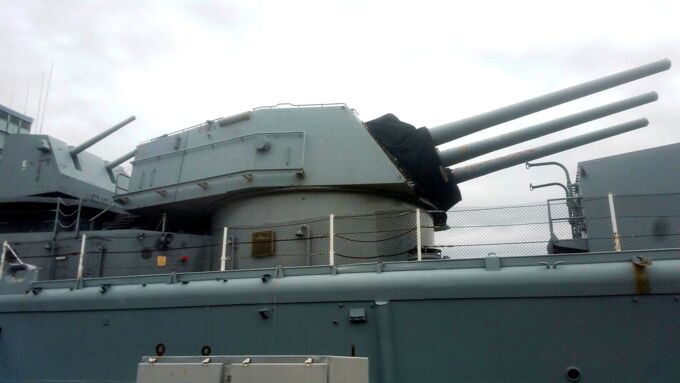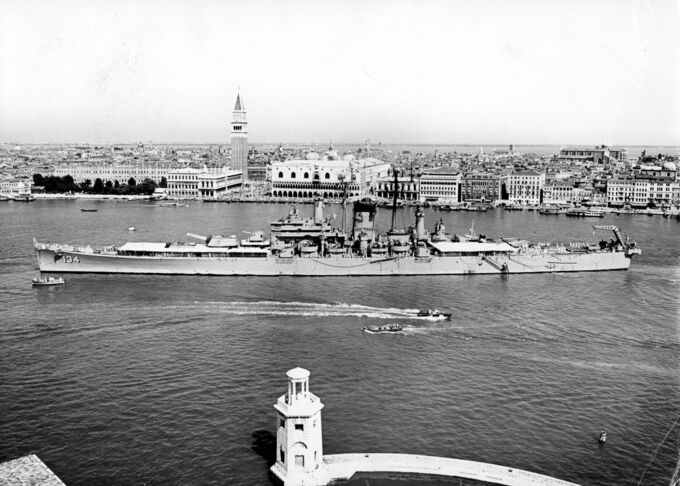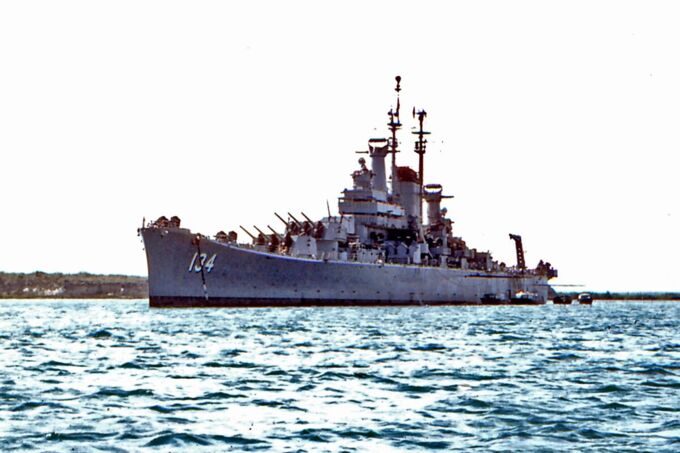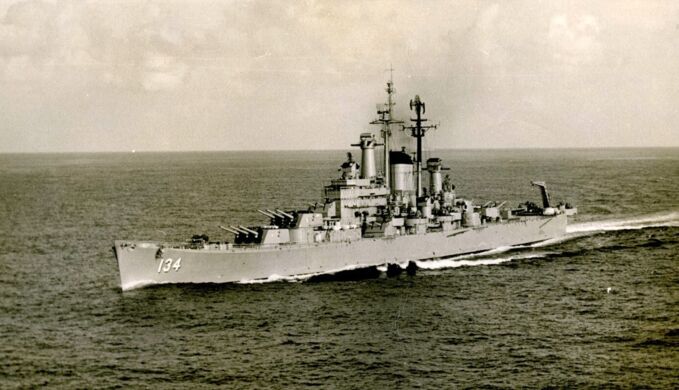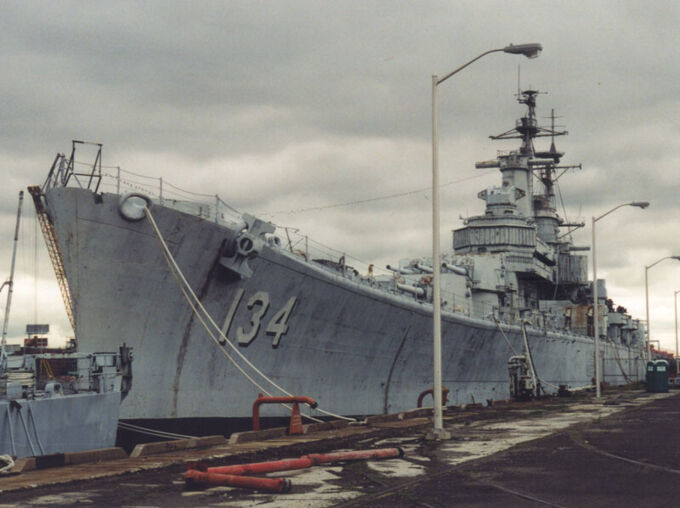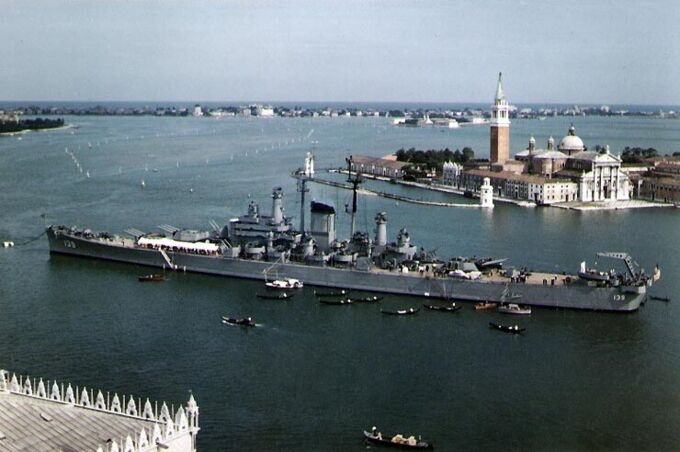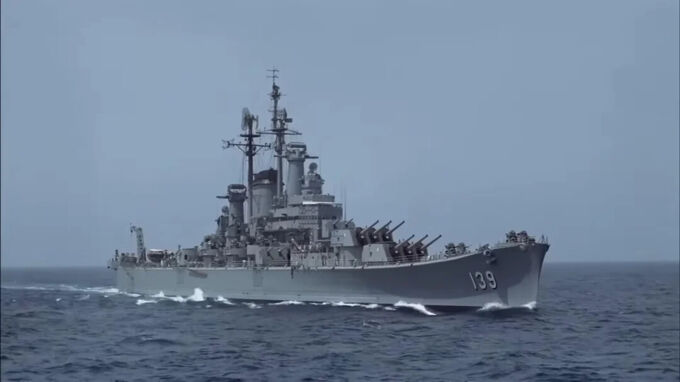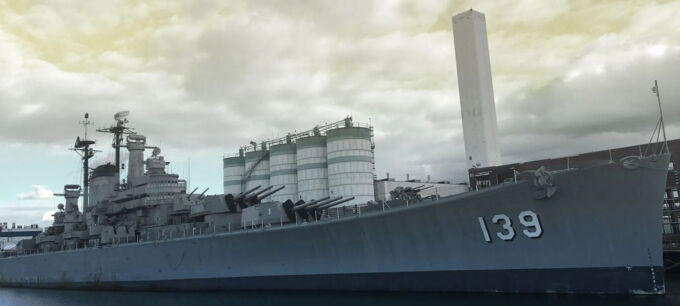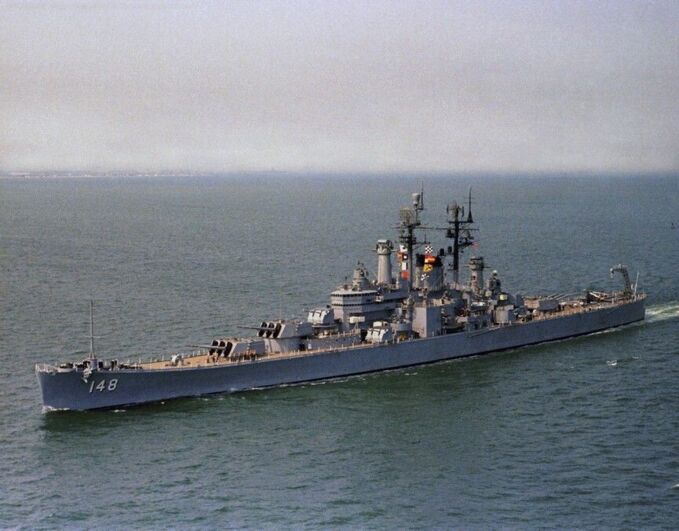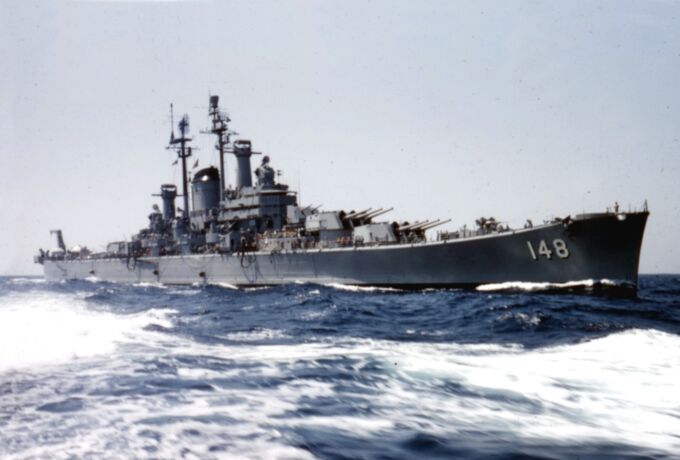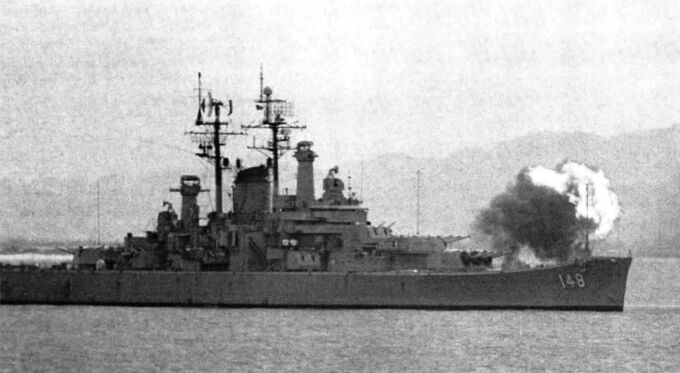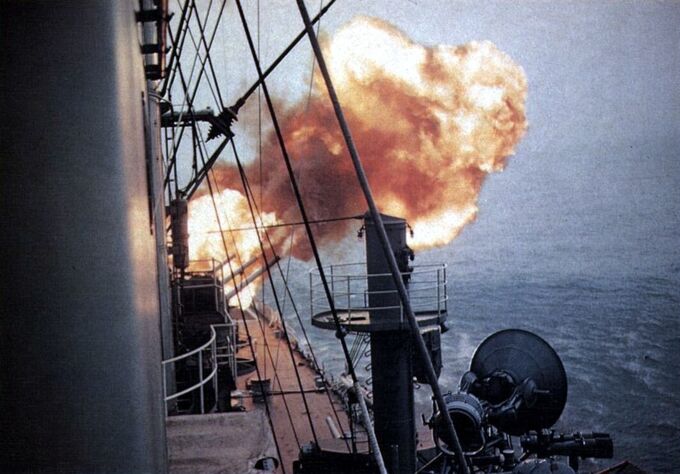The U.S. Des Moines-class cruisers were a class of cruise ships built as heavy cruisers for the United States Navy during the late 1940s and early 1950s. Famous for their powerful armament and design innovations, as well as their long service life, they represented a remarkable achievement of naval engineering during the Cold War. This was the last heavy cruiser class commissioned by the United States. That being said, they provided an important role within the Navy for decades.
Design and Development
The Des Moines-class cruisers originated during a time of change in naval warfare. The end of World War II had shifted naval priorities, and the need for versatile, heavily armed ships capable of anti-aircraft and naval gunfire support became apparent. The U.S. Navy wanted a ship that could perform multiple roles—something that could serve as an anti-aircraft platform, a command ship, and a powerful gunship.
These cruisers featured a sleek, modern hull design with a displacement of about 17,000 tons at full load. Their dimensions were impressive: 673 feet in length, 71 feet in width, and a draft of 32 feet. In addition, these ships were complemented with high-speed propulsion systems, enabling them to reach speeds of 33 knots, making them fast and formidable opponents in any naval engagement.
Armament and Features
The primary feature of the Des Moines-class cruisers was their heavy armament. These ships were equipped with three triple 8-inch (203 mm) turrets, giving them significant firepower. These 8-inch guns had the capacity of firing shells up to 20 miles, providing both anti-surface and shore bombardment capabilities. The 8-inch gun was the 2nd largest caliber to be used on a U.S. Navy cruiser coming behind the 12-inch guns used on the Alaska-class battlecruisers.
In addition to their heavy guns, the Des Moines-class ships were equipped with a wide array of smaller caliber weapons for anti-aircraft defense. This included twelve 5-inch (127 mm) guns in dual-purpose mounts, intended for both anti-aircraft and surface warfare roles. Furthermore, these cruisers carried an array of smaller caliber automatic weapons like 3-inch and 40mm Bofors guns to defend against incoming aircraft and missiles.
Service History
The Des Moines-class cruisers were commissioned just as the Cold War was beginning to take shape. The United States Navy needed to adapt from its WWII warfare role to enforcing global security. These ships were designed with a multi-role capacity in mind and were heavily involved in both Cold War and post-war operations.
The first cruiser of the class, USS Des Moines (CA-134), was laid down in mid-1945 and commissioned in late 1948. During most of the Des Moines' service life, she served as the flagship of the United States Sixth Fleet based in the Mediterranean sea. While Des Moines never saw combat, she was primarily used to show off American naval power, participating in various training exercises, and conducting diplomacy missions throughout the 1950s. Des Moines made several visits to foreign ports and was used as a mobile command ship for naval operations in the Mediterranean and Atlantic especially during the Lebanon crisis of 1958. She was struck from the naval roster in mid-1961 and was kept in the mothball fleet until finally being scrapped in 2005.
The second ship of the class, USS Salem (CA-139), was laid down in mid-1945 and commissioned in mid-1949. Like the Des Moines, Salem would occasionally serve as a flagship for the 6th Fleet in the Mediterranean during the early 1950s and would regularly make visits to foreign ports as a show of good will. Salem was scheduled for inactivation in early-1958 but due to the Lebanon crisis of 1958 she would go on serve as the Flagship of the 2nd Fleet until the conflict ended. She would be decommissioned in 1959 and placed in the mothball fleet like her sister before her. It is also worth noting that both Des Moines and Salem were surveyed in 1981 for possible reactivation for Ronald Reagan’s 600-ship plan but the costs of reactivation and modernization would have costed as much as an Iowa-class battleship. In 1994 Salem would be saved from the ship breakers by becoming a museum ship in Quincy, Massachusetts.
The final Des Moines-class cruiser, USS Newport News (CA-148), was laid down in late-1945 and commissioned in early 1949. The Newport News' early service life was very similar to her sisters serving in the Mediterranean with the 6th Fleet making visits foreign ports and participating in naval exercises. In late 1962 she would serve as the flagship of the Atlantic Fleet for the Cuban Missile Crisis. In late 1967 she began her first deployment to Southeast Asia for the Vietnam war. Unlike her sisters, Newport News was the only Des Moines-class cruiser to fire her guns “in anger” by providing gunfire support against enemy positions. She would go on to make a total of 3 deployments in Vietnam firing a total of 59,241 rounds of HE and garnered the nickname “The Gray Ghost from the East Coast.” The Newport News was among the last of the U.S. Navy’s heavy cruisers in service before being decommissioned in mid-1975 and was unfortunately scrapped in early 1993.
| Ship | Builder | Laid Down | Launched | Commissioned | Decommissioned | Fate |
| Des Moines (CA-134) | Bethlehem Steel Corporation, Quincy, Massachusetts | 28 May 1945 | 27 September 1946 | 16 November 1948 | 6 July 1961 | Struck 9 July 1991, scrapped 2007 |
| Salem (CA-139) | Bethlehem Steel Corporation, Quincy, Massachusetts | 4 July 1945 | 25 March 1947 | 14 May 1949 | 30 January 1959 | Struck 12 July 1991, museum ship at Quincy, Massachusetts |
| Newport News (CA-148) | Newport News Shipbuilding, Newport News, Virginia | 1 October 1945 | 6 March 1948 | 29 January 1949 | 27 June 1975 | Struck 31 July 1978, Sold for scrap, 25 February 1993 |
Technological Legacy
While the Des Moines-class cruisers were formidable ships during their time, they were part of a dying breed of naval warfare technology. The development of guided missiles and nuclear-powered aircraft carriers would eventually overshadow the role of heavy cruisers. These ships were built during a time when the U.S. Navy was transitioning away from traditional naval gunfire to more modern, missile-based systems.
Nevertheless, the Des Moines-class cruisers contributed significantly to the development of naval technology. Their radar, fire control, and gun systems served as a bridge between the traditional gunnery-focused naval forces of World War II and the modern missile-based navy that would emerge in the following decades.
